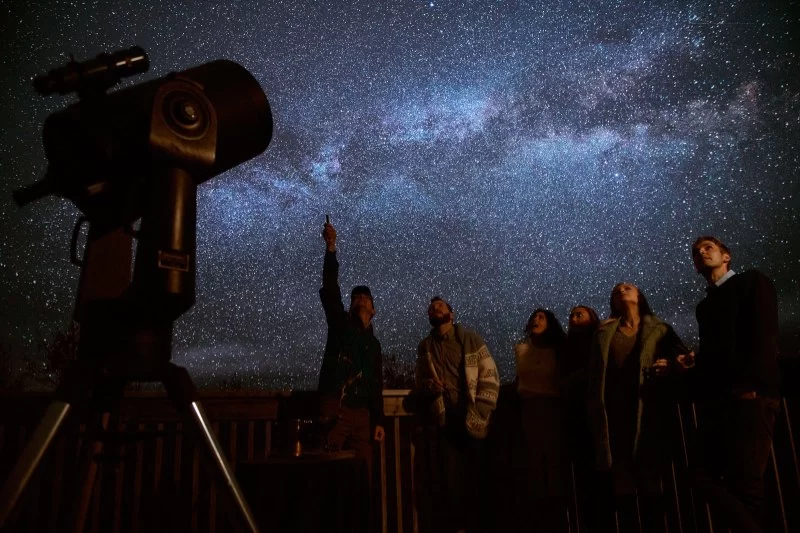- 1 - why-location-matters-for-deep-sky-stargazing
- 2 - how-to-identify-a-dark-sky-campsite
- 3 - weather-and-visibility-factors
- 4 - personal-stories-that-bring-the-stars-to-life
- 5 - tips-on-what-to-bring-for-an-ideal-stargazing-trip
- 6 - choosing-family-vs-solo-friendly-stargazing-sites
- 7 - partnering-with-pine-cliff-resort-for-stellar-nights
1. Why Location Matters for Deep-Sky Stargazing
Stargazing isn’t just about pointing your eyes—or telescope—at the sky. To truly experience the wonder of deep-sky objects like nebulas, galaxies, and distant star clusters, the right location is everything. Light pollution, elevation, and atmospheric clarity can make or break your night under the stars.
Remote areas far from urban centers offer the darkest skies. Parks designated as International Dark Sky Parks or areas on the edge of mountain ranges are perfect choices. The farther you are from artificial light, the clearer and more breathtaking your view will be.
2. How to Identify a Dark Sky Campsite
Not all campsites are equal when it comes to stargazing. You need a location with minimal artificial lighting, ideally with some elevation and unobstructed horizons. Use light pollution maps such as those from Clear Dark Sky or Dark Site Finder to spot promising areas.
Seek campsites that are intentionally designed for night sky observation. Some parks, like those in Utah and Arizona, cater to astronomers and have special viewing areas or even night sky programs. Look for flat areas with dry air and low humidity—moisture scatters light and clouds your view.
3. Weather and Visibility Factors
Even the perfect campsite is useless if the weather doesn’t cooperate. Always check the long-range forecast and monitor local weather apps for clear skies. Visibility can also be affected by wildfire smoke, humidity, and temperature inversions, which trap pollution close to the ground.
Spring and fall tend to offer the best mix of cool, dry air and long nights. If you're heading out during summer, aim for higher elevations to escape heat and haze. Make sure to plan a backup night in case your primary stargazing evening gets clouded over.
4. Personal Stories That Bring the Stars to Life
During a trip to a secluded ridge in Oregon’s Ochoco National Forest, a father and daughter set up camp for their first-ever stargazing getaway. With no signal and no distractions, they watched as the Milky Way stretched overhead in astonishing clarity. Through their telescope, they glimpsed Saturn’s rings and the Andromeda galaxy. It was more than an educational moment—it was a memory etched in awe.
These kinds of magical experiences are what inspire more and more travelers to prioritize stargazing in their outdoor adventures. Choosing the right campsite makes those moments possible.
5. Tips on What to Bring for an Ideal Stargazing Trip
Even if you have the best campsite, your comfort and equipment can elevate the night sky experience. Essentials include:
Red-light headlamp: Preserves night vision while providing just enough light to navigate.
Star map app or printed chart: Helps identify celestial objects and learn their names.
Telescopes or binoculars: For those serious about deep-sky exploration, a telescope unlocks worlds invisible to the naked eye.
Warm clothing and blankets: Even in summer, nights in dark sky locations get cold quickly.
Comfy chairs or pads: Stargazing is best enjoyed lying back and looking up.
6. Choosing Family vs. Solo-Friendly Stargazing Sites
Families with kids will benefit from drive-in campsites with restroom access and flat ground for safe navigation. Some dark sky parks even have ranger-led programs perfect for young astronomers. Look for safety-rated parks with clear signage and moderate terrain.
For solo travelers or experienced campers, backcountry sites offer solitude and maximum darkness. Just be sure to inform someone of your location and pack appropriately, especially if you're far from cell service or emergency help.
7. Partnering with Pine Cliff Resort for Stellar Nights
If you’re serious about finding the best campsite for stargazing and observing deep-sky objects, check out what Pine Cliff Resort offers. With locations chosen for their remoteness, low light pollution, and scenic beauty, it’s a favorite among amateur astronomers and seasoned campers alike.
Whether you're seeking a weekend under the stars with friends, a solo night photographing constellations, or a family-friendly skywatching retreat, Pine Cliff Resort provides both access and comfort in the heart of nature's dark canvas.
Because when you look up from the perfect spot, you don’t just see stars—you feel connected to something cosmic, ancient, and awe-inspiring.







